CES 2025 roundup – computing, smart home, and weirdo gadgetry highlights
As CES 2025 draws to a close, we scoop up some of the more eye-catching computing, gadgetry, smart home, and downright peculiar products from the swarm of tech occupying the Las Vegas Convention Centre.
January 10, 2025

Computing
Nvidia Project Digits
As expected, AI was ubiquitous at CES this year. Project Digits is described as the world’s smallest AI super computer, which provides AI researchers, data scientists and students access to the Nvidia Grace Blackwell platform. It features the new Nvidia GB10 Grace Blackwell Superchip, which offers a petaflop of AI computing performance for running large AI models, we’re told.
The idea is users can develop and run inference on models with it, then deploy them on accelerated cloud or data centre infrastructure.
“AI will be mainstream in every application for every industry. With Project Digits, the Grace Blackwell Superchip comes to millions of developers,” said Jensen Huang, founder and CEO of Nvidia. “Placing an AI supercomputer on the desks of every data scientist, AI researcher and student empowers them to engage and shape the age of AI.”
Project Digits will be available in May, starting at a not insubstantial $3,000.
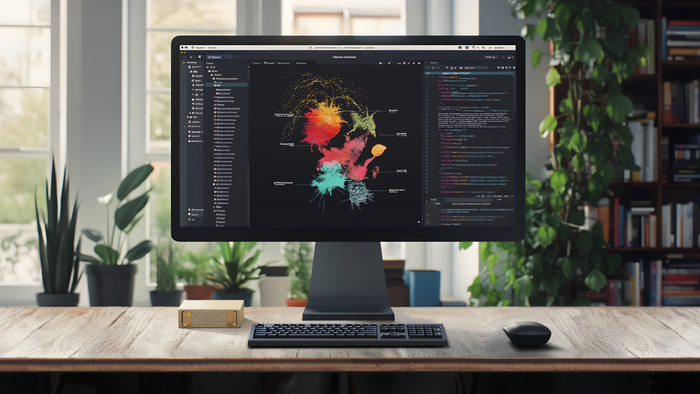
Lenovo ThinkBook Plus Gen 6 Rollable
Lenovo dropped an assortment of new laptops at the show, all of which are apparently AI powered. Lenovo talked about its ‘Smarter AI for All vision’, which is about integrating AI capabilities into its Copilot+ PCs and solutions, as well as Lenovo AI Now, an on-device personalised AI assistant built on Meta’s Llama 3 model. This offers natural language processing for tasks like document summarisation, knowledge base retrieval, and workflow assistance, we’re told.
One of the more interesting products is the ThinkBook Plus Gen 6 Rollable, which offers a bit of twist on the laptop form factor. It features a rollable display that expands vertically from 14 inches to 16.7 inches, giving split-screen functionality and virtual display options, according to the release.
“At Lenovo, we’re dedicated to pushing the boundaries of technology to empower individuals, businesses, and gamers to achieve their full potential,” said Luca Rossi, President, Lenovo Intelligent Devices Group. “With AI at the heart of our personalized, productive and protected experiences, our latest device and software innovations across ThinkPad, ThinkBook, Yoga, Idea, Legion and more not only deliver exceptional performance and versatility but also redefine how users work, create, and play.”

GeForce RTX 50 Series
While Nvidia has had a fine old time of it recently pumping out a gazillion GPUs to feed the insatiable computational appetite of GenAI, it’s dropped a new line aimed at its traditional customer base – gamers.
Powered by the Nvidia Blackwell architecture, fifth-generation Tensor Cores and fourth-generation RT Cores, the GeForce RTX 50 Series serves up AI-driven rendering, including neural shaders, digital human technologies, geometry and lighting.
“Blackwell, the engine of AI, has arrived for PC gamers, developers and creatives,” said Jensen Huang, founder and CEO of Nvidia. “Fusing AI-driven neural rendering and ray tracing, Blackwell is the most significant computer graphics innovation since we introduced programmable shading 25 years ago.”
The flagship GeForce RTX 5090 GPU features 92 billion transistors, providing over 3,352 trillion AI operations per second (TOPS) of computing power. By way of comparison we’re told Blackwell architecture innovations and DLSS 4 means it outperforms the GeForce RTX 4090 GPU by up to 2x.
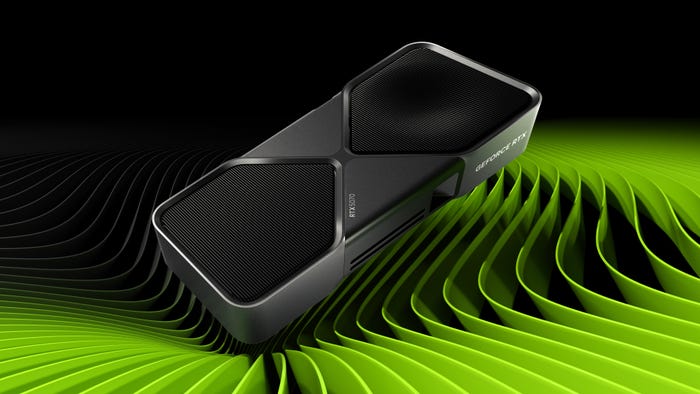
Gadgets
Swippitt
For those that lament the time it takes to charge up a phone, Swippitt is described as an Instant Power System (IPS) which can power it up in two seconds and double the lifespan of your battery.
It consists of a Swippitt Hub, a battery system with ‘integrated speed-swapping technology’, Swippitt Link, which is a smartphone case with an integrated smart battery, and an app to access stats and location management.
Essentially you load the smartphone into the toaster-looking hub and it swaps out the dead battery in the case with one of the five charged ones inside. So it’s not actually charging your phone battery in 2 seconds, but result is still and instant hit of charge for your phone.

Halliday
These are described as the first AI glasses to feature a ‘proactive AI agent’, as well as something called DigiWindow technology – “a completely unnoticeable, first-of-its-kind near-eye display that beams information directly within a user’s field of vision without a lens.”
This delivers information and AI insights directly to the user’s eyes, apparently. This is perceived as a 3.5-inch screen in the upper-right corner of the user’s view, which can doll out information without getting in the way of the main field of view, which is helpful if you don’t want to walk in front of a bus while reading the football scores, we suppose.
“Halliday redefines what an AI agent can do—it doesn’t just respond to commands; it anticipates users’ needs and offers assistance proactively. While traditional reactive AI assistants are limited to basic tasks like setting alarms or identifying objects, Halliday’s proactive AI agent takes AI assistance to an entirely new level. It seamlessly analyzes conversations, answers direct questions, and offers additional insights—all without waiting for a prompt,” states the release.
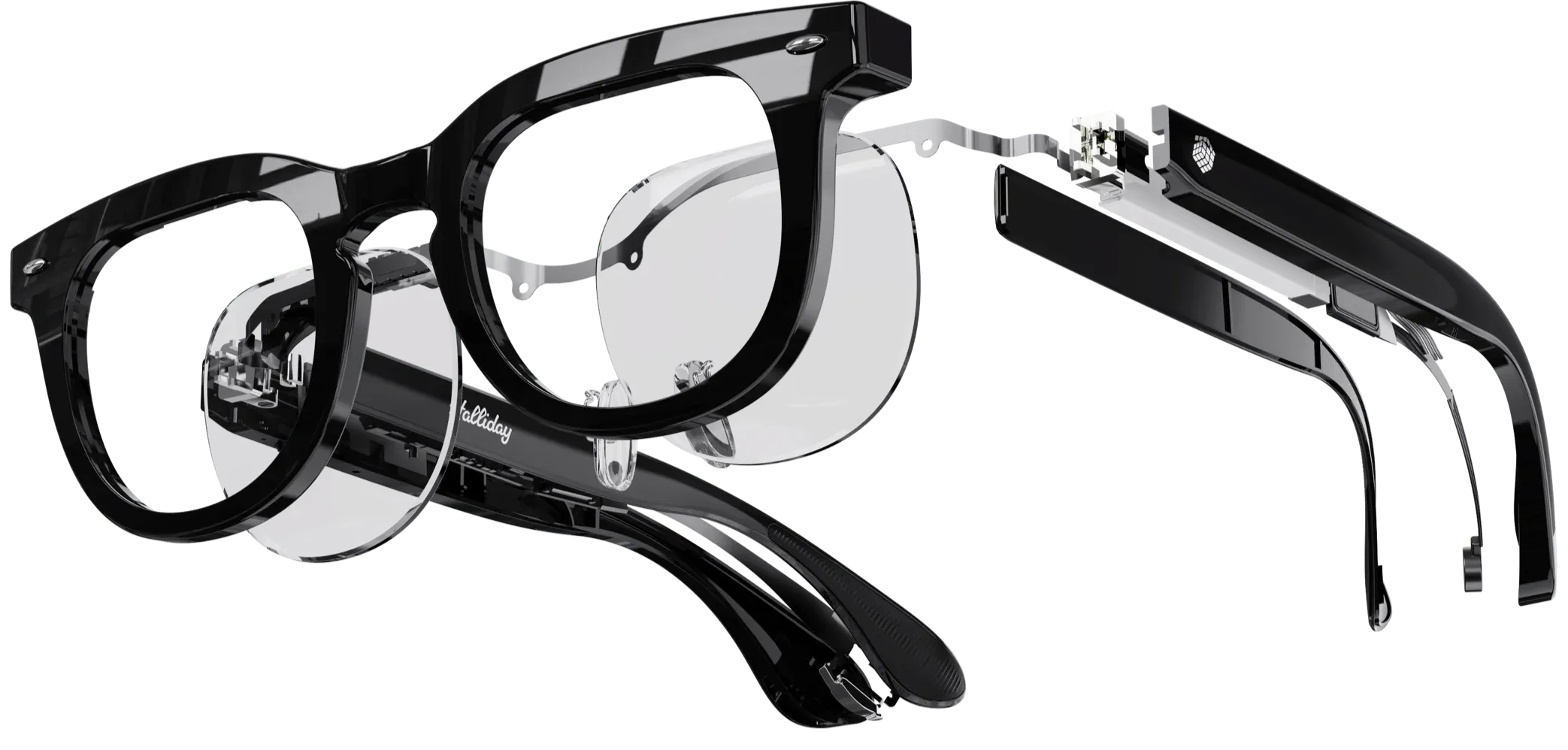
Acer Nitro Blaze 11
Acer has updated its handheld gaming console line with a couple of new models, the biggest having a whopping 10.95-inch screen. It is powered by AMD Ryzen 7 8840HS processors, 16 GB of LPDDR5X memory, and up to 2 TB of storage.
The WQXGA touch panels feature Radeon Super Resolution and AMD FidelityFX Super Resolution technology, and it also includes detachable controllers and a front camera for video calls and streaming.
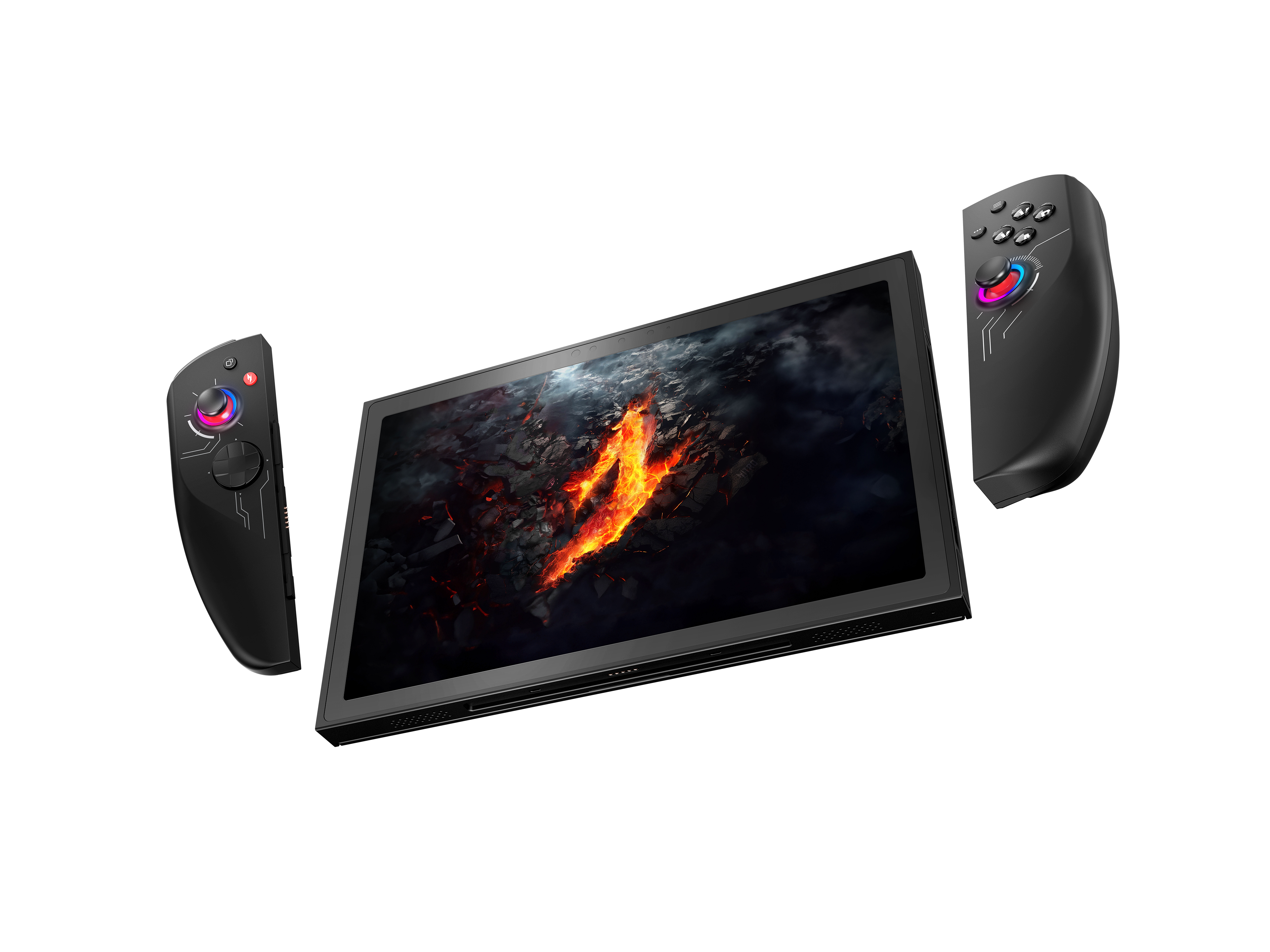
Smart home
Saros Z70
We’ve had little disks that bumble around hoovering up for a while now, but this one can pick up tissues, socks, and anything else its foldable five-axis mechanical arm can manage.
It can move obstacles out of its way as it goes about its cleaning duties, and if the cat is in the way: “It stops its main brush and moves aside in advance when approaching your beloved pets to avoid frightening them. It will boost suction when cleaning around pet supplies for a through clean,” states the product website.
You can also programme it to relocate household items to predesignated position, apparently.
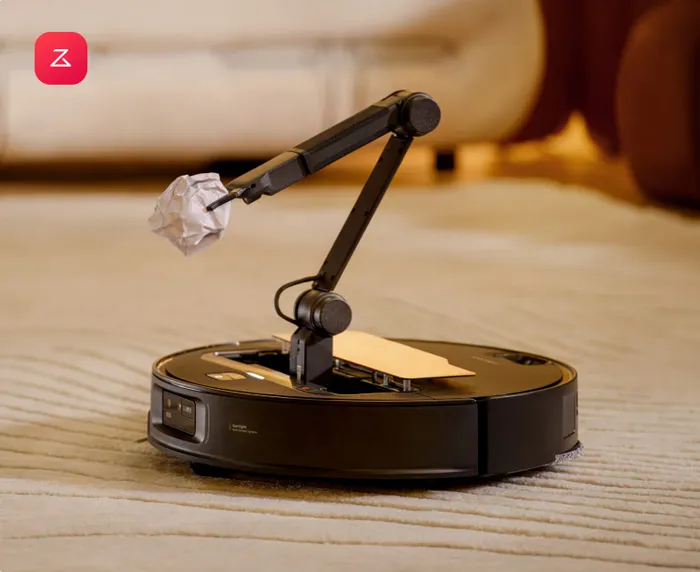
Omnia
This is a sort of smart mirror, or as the company behind it, Withings, puts it, “a conceptual product designed to provide users with an unprecedented, interactive 360-degree view of their vital indicators.”
Currently in development, it is supposed to use AI to aggregate, analyse, and interpret key indicators such as heart health, nutrition trends, body composition, lung function, activity tracking and sleep quality.
It has a connected base loaded with sensors, and conducts daily measurements of things like weight, heart health, and metabolic health scans from its base.
It’s also got an ‘empathetic AI Vocal Companion’, which offers real-time feedback, answers questions, and provides ‘motivation’ – which, it has to be said, sounds like it has the potential to be as annoying as it is no doubt technologically impressive.
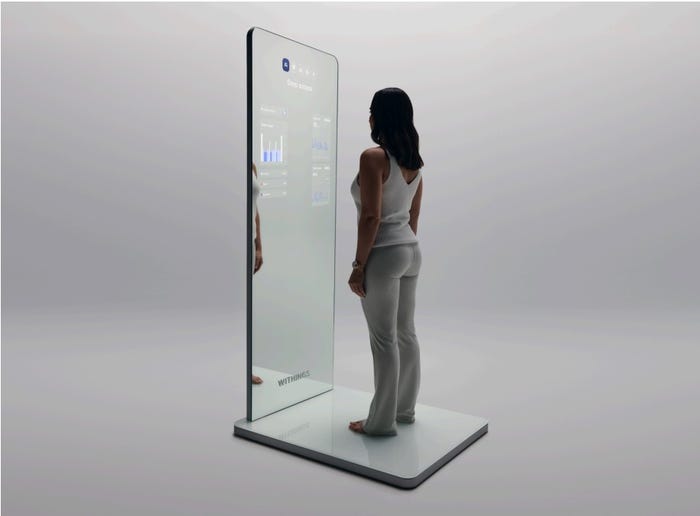
Plantiform
Plantaform is described as the world’s first smart indoor garden that uses fog to grow plants – or ‘fogponics technology’. This is an offshoot of aeroponics developed by NASA, apparently, and delivers water and nutrients directly to plant roots through an ultra-fine mist, resulting in faster plant growth and higher yields.
It consumes 30 to 50% less water than hydroponic systems and 10% less than aeroponic systems, we’re told, and as a result only need water refills every 2-3 weeks.
“Unlike other smart indoor gardens on the market today, Plantaform is a fully enclosed, and fully automated smart indoor garden that precisely controls the growing environment,” said Renata Scorsone, VP Marketing, Plantaform. “By optimizing light, water, airflow, and even temperature levels, Plantaform makes growing fresh greens, vegetables and edible flowers as easy as making a cup of coffee.”
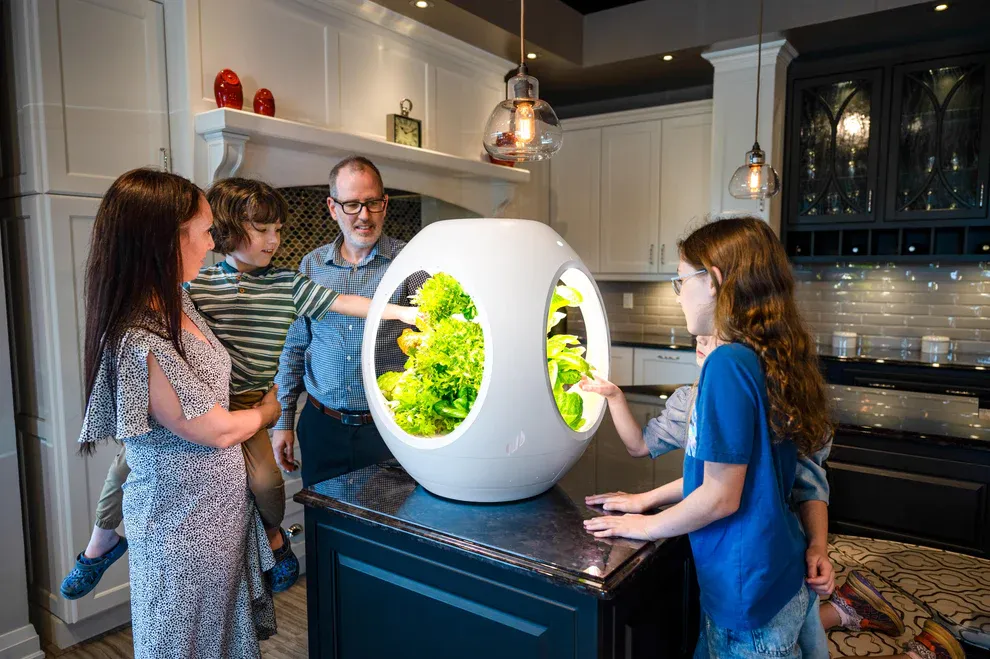
TVs
Hisense HAIO163
Big old TVs that would seemingly require you to knock through exterior walls of a building in order to install them have always been a staple of CES – but this one takes the biscuit at 163 inches.
“Their vivid and vibrant colours immerse viewers and will effectively provide them with the information they are looking for,” states the product page. “All this with the flexibility and reliability that are required for round-the-clock broadcasting locations due to light sensors, intelligent temperature control and dual-core SOC technology for PC-less offline or cloud-based content management. You can rest assure your content will be delivered 24/7 in an elegant, vibrant and reliable way.”
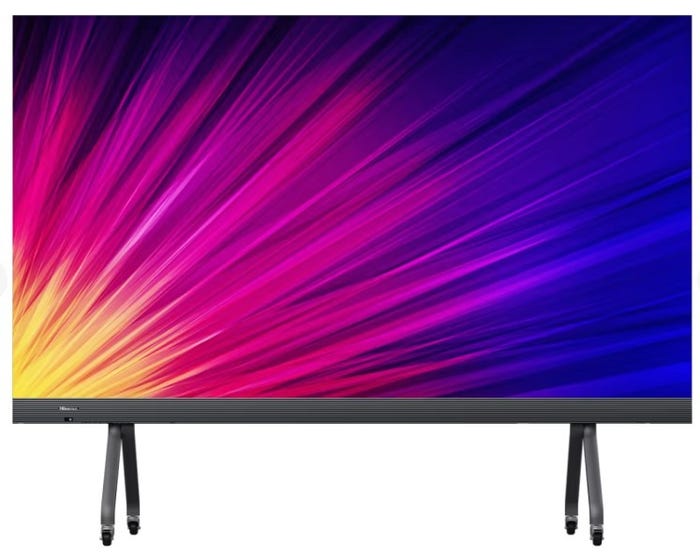
LG OLED TVs
It’s sometimes tricky to distinguish between the parade of brightly coloured rectangles that have made up a good chunk of CES for years – but LG is leaning into the AI functionality of its class of 2025 screens, which is supposed to offer various customisable and personalisation features.
LG’s says its latest 2025 OLED evo lineup presents “unparalleled OLED picture quality with impeccable blacks, exceptional brightness and advanced processing capabilities.”
“Powered by the advanced Alpha 11 AI Processor Gen2, the 2025 OLED evo models provide enhanced picture and sound quality,” states the release. “Deep learning algorithms meticulously analyze and refine low-resolution and low-quality images, enhancing them to a higher definition with pixel-level precision for natural and sharper visuals. Additionally, Dynamic Tone Mapping Professional offers expert-level control over HDR10 content for professional creators, allowing precise customization and fine-tuning of images for accurate color and detail representation in all viewing environments.”
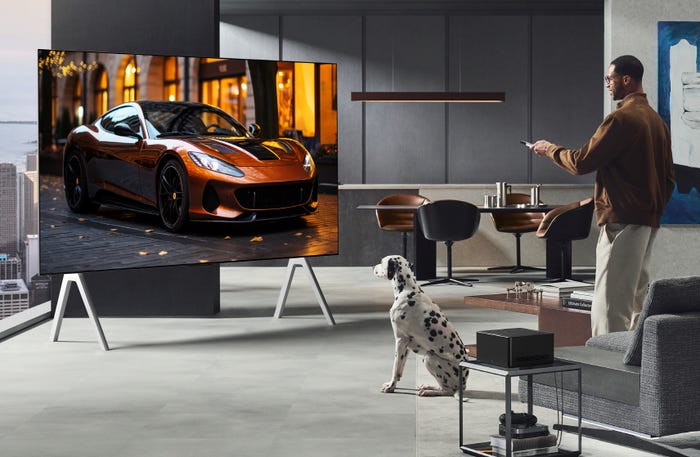
Samsung Neo QLED 8K QN990F
This is apparently Samsung’s most advanced TV to date. Powered by the NQ8 AI Gen3 Processor, the TV has a suite of on-device AI features to enhance picture quality, sound clarity, such as 8K AL upscaling and auto HDR remastering.
“Encased in an ultra-slim, minimalist design, the QN990F is a premium home entertainment device that combines cutting-edge technology with elegant aesthetics. With its advanced features and refined design, it elevates both the performance and style of any living space, offering a truly sophisticated entertainment experience,” boasts the release.
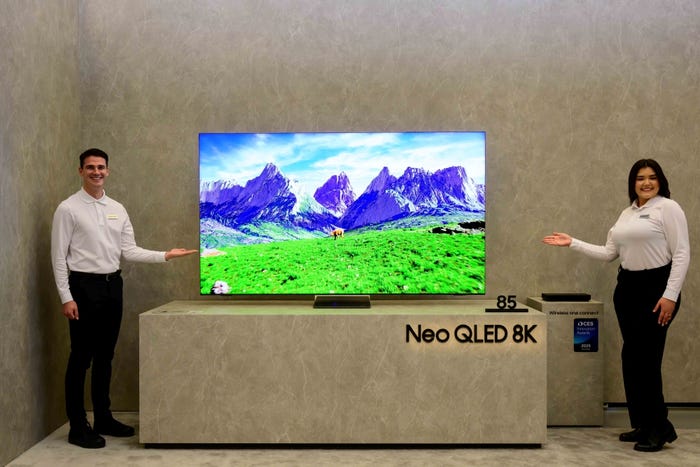
Weird tech
Nékojita FuFu
Tokyo-based robotics startup Yukai Engineering unveiled this portable robot that blows on hot drinks or food to cool them down.
Apparently it’s designed to help people who have a ‘highly heat-sensitive tongue’. The robot generates cool ‘breath’ with an internal fan, and uses a special algorithm called ‘Fu-ing System’ to randomize its blowing strength and rhythm ‘in the way humans might.’
Tsubasa Tominaga, the chief marketing officer of Yukai Engineering, ‘a.k.a. the dad who needed help cooling baby food’, said: “We created Nékojita FuFu as a little personal meal partner, so you can solve your ‘néko-jita’ problem anywhere, anytime. The robot doesn’t just help you enjoy hot coffee. It can make it easier for seniors to down hot soup and reduce parents’ chores by helping kids eat with less help. We are thrilled to show Nékojita FuFu in action at CES 2025, as it switches between various blowing modes, such as the full-force ‘I’ve Got This!’ and gentler ‘Not Gonna Spill’ modes. The hard-working robot will surely make you want to cheer it on.”
It's the sort of thing you’re either interested in or you’re not.

Nanoleaf LED Light Therapy Face Mask
If you’ve ever fancied giving yourself facial therapy whilst looking like Doctor Doom in soft pastel shading, this might be the one for you.
“Harness the healing power of light and unlock healthy glowing skin with the Nanoleaf LED Light Therapy Face Mask,” states the product page.
LED Light Therapy utilises different wavelengths of light to trigger the skin's natural healing processes, we’re told, and it targets a wide range of ‘skin concerns’ such as fine lines, acne, uneven skin tone.
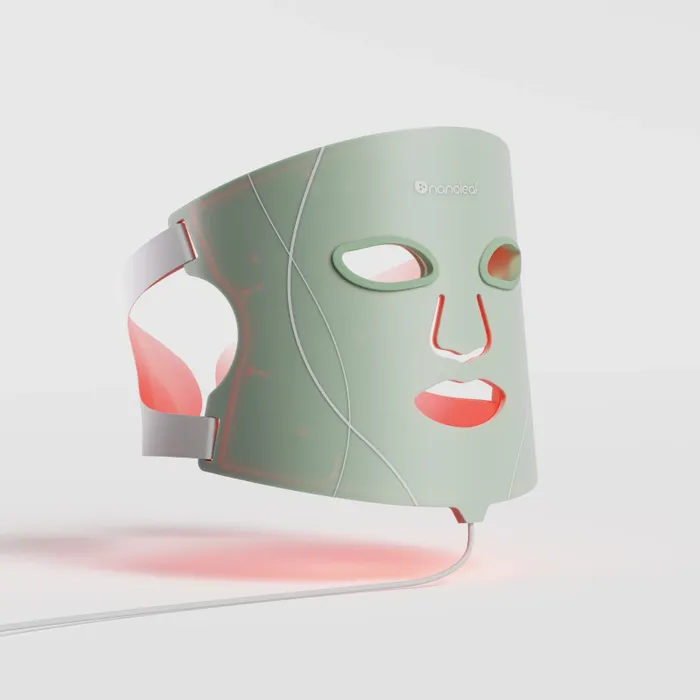
Realbotix’s Melody
Realbotix unveiled its latest humanoid robot, Melody, at CES. We’re told it has advanced motor technology, which enhances movement fluidity, modularity, and interaction, “making her a versatile option for a variety of applications.”
It, or ‘she’ as the release terms it, has advanced vision systems and micro-cameras embedded in the eyes, meaning it can “track movement, maintain eye contact, and identify objects, enabling more meaningful interactions.”
“Melody was created with the intention of having robots that are easy to travel with and modify for various forms of personal interaction,” said Andrew Kiguel, CEO of Realbotix. “Her modular design and advanced features provide a practical and accessible platform for diverse applications. In addition, the hardware is open-source, allowing our robots to interact with various AI platforms when required.”

About the Author
You May Also Like










.png?width=300&auto=webp&quality=80&disable=upscale)


_1.jpg?width=300&auto=webp&quality=80&disable=upscale)